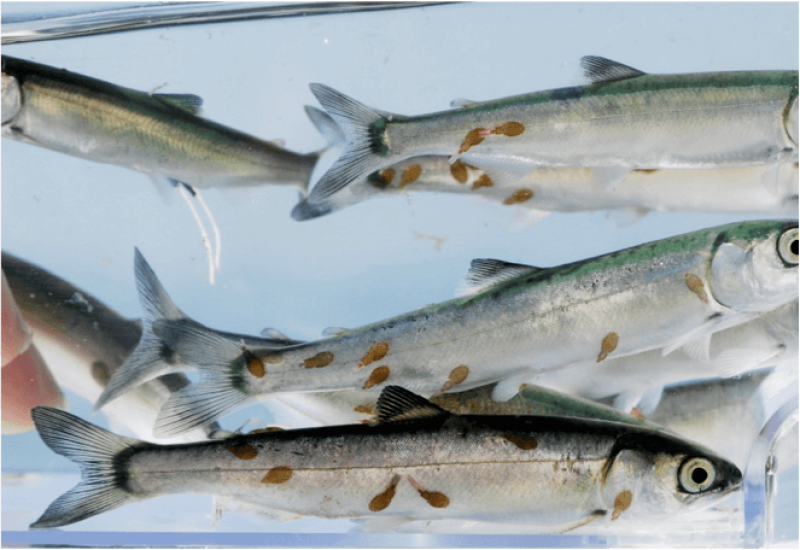Researchers at Norwegian institute Nofima are investigating whether gene editing could provide an answer to the problem of sea lice. The Nofima team …. will be using the gene editing technology CRISPR to try and build resistance to lice into Atlantic salmon. They believe that genetic differences between Atlantic and Pacific salmon could explain why several species of the latter are unattractive as hosts for sea lice.
[Editor’s note: Sea lice are usually controlled with chemicals that can have unintended side effects.]
“It is no exaggeration that the knowledge we create in this new project could transform the Norwegian aquaculture industry if Atlantic salmon can be made to be highly or completely resistant to lice”, said senior researcher and project leader Nick Robinson in Nofima.
He added: “If we can reveal the differences in the genetic code that cause lice to be attracted to Atlantic salmon, or that makes the skin of North American salmon a bad place for sea lice to settle and develop, then it may be possible for us to use that information to make Atlantic salmon resistant to sea lice, and have better health”.
The project will make use of the CRISPR-Cas9 “genetic scissors” process, developed by Emmanuelle Charpentier and Jennifer Doudna, who …. were awarded the Nobel Prize in Chemistry for their discovery.
…
If the researchers succeed in carrying out gene editing in the laboratory, the salmon must be thoroughly tested up to adult size in closed facilities to investigate how effective the change is.































